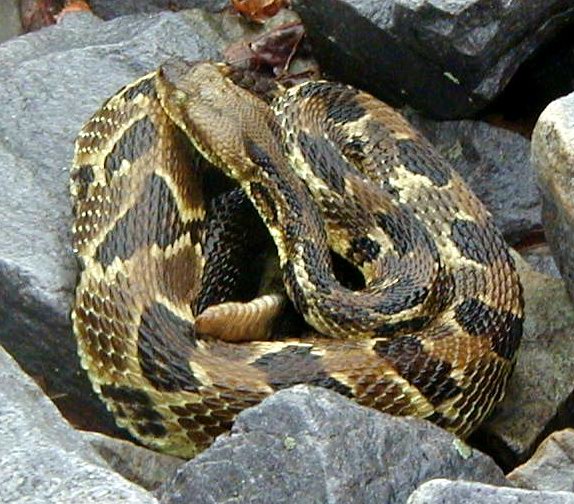
|
Common Name:
Timber Rattlesnake Scientific Name: Crotalus borridus The timber rattlesnake is one of the three poisonous snakes in the Mid-Atlantic Appalachian region (the other two are the copperhead and the cottonmouth or water moccasin). It is distinguished by the characteristic dark chevron bars and tan body, a wedge-shaped head, and a rattle. Often found on rock outcroppings. Potpourri: The timber rattlesnake is a Crotalid or pit viper. The term pit viper refers to a pit between the eye and the nostril on each side of the head. The pits are complex thermoreceptors which sense the heat given off by warm-blooded animals at a distance of up to 40 centimeters (16 inches). It is the primary method the snake uses to detect prey. The rattle is formed by successive layers of keratinized, (keratin is the protein substance that make up nails, hair and horns) hardened epidermis. It is designed to ward off large mammals so that they do not injure the snake. This works rather well with humans, horses and cattle. An adult has 6 to 10 rattle segments. Snake venom contains two types of poison. Hemolytic toxins attack blood vessel walls, resulting in severe swelling and pain. Neurotoxins have no immediate effects, but affect nerves removed from the site, particularly those involved in the respiratory function. The bite of the Timber Rattlesnake is generally not deadly, even if left untreated. |